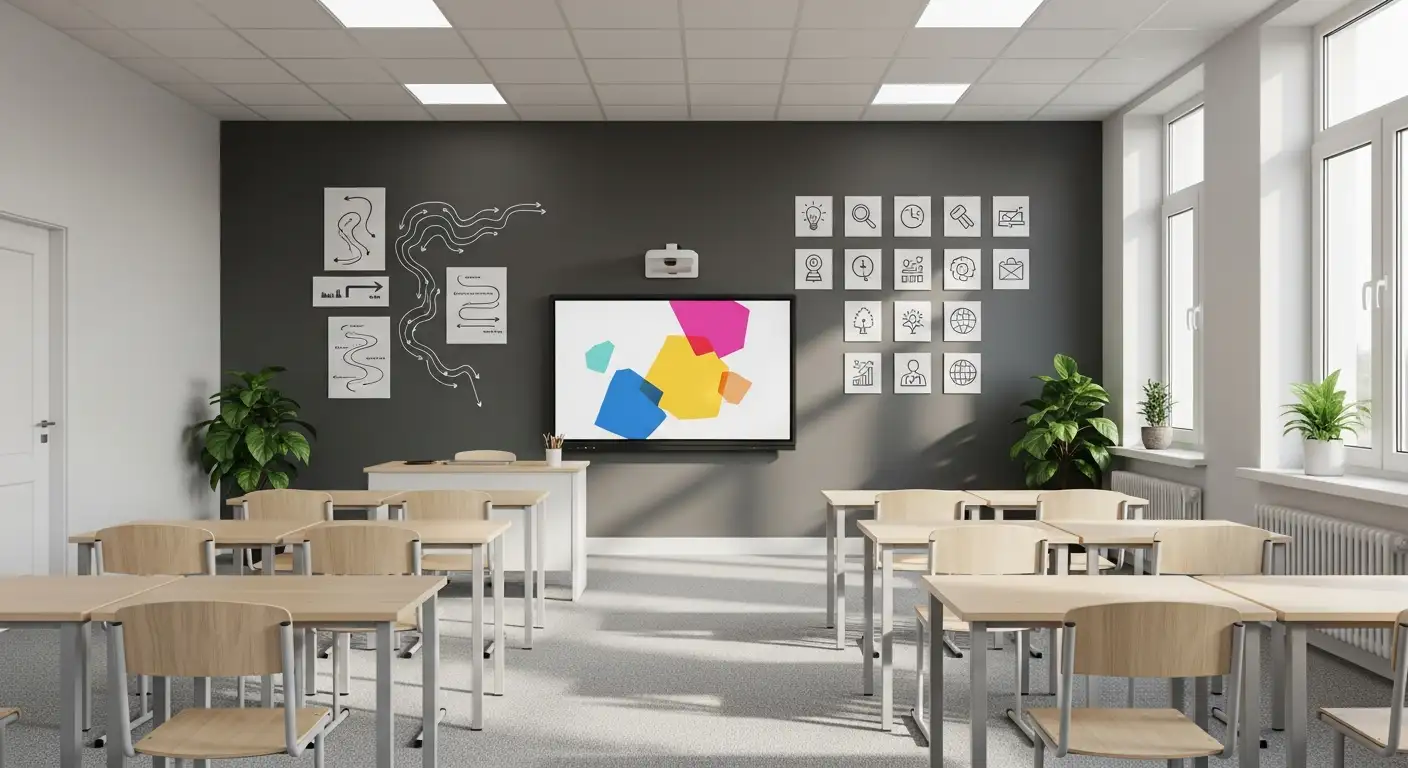How to Use Therapy Strategies at Home for Maximum Success
Empowering Your Mental Health Journey from Home

Unlocking the full potential of therapy outside the therapist's office
Maximizing the benefits of therapy involves more than just attending sessions; it requires a committed application of strategies in everyday life. By integrating evidence-based exercises, creating supportive environments, and practicing self-awareness, individuals can foster ongoing personal growth and mental well-being. This guide offers comprehensive insights into how you can effectively implement therapy techniques at home for maximum success, whether managing stress, emotional issues, or supporting children’s speech development.
Understanding the Foundations of Self-Guided Therapy
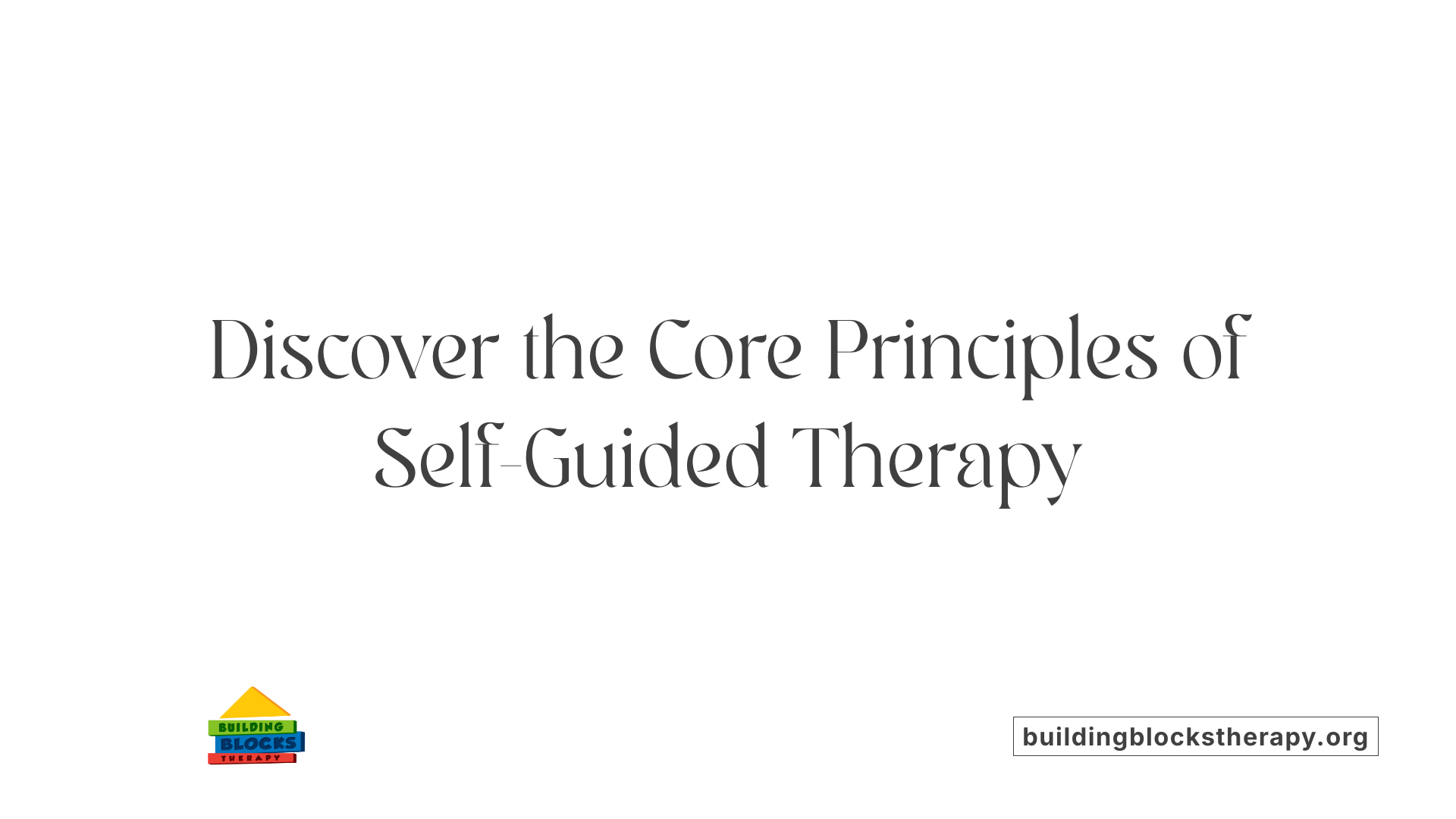
How do therapy exercises support self-awareness, emotional regulation, and resilience?
Therapy exercises are essential tools that help individuals develop a deeper understanding of their internal experiences. They promote self-awareness by encouraging reflection on thoughts and feelings, which makes it easier to recognize patterns and triggers. For emotional regulation, techniques like mindfulness and journaling assist in managing intense emotions and reducing impulsive reactions.
Resilience is bolstered through consistent practice of these exercises, enabling individuals to cope better with stress and setbacks. Structured activities such as role-playing or gratitude journaling create a sense of mastery and optimism, fostering a mindset geared toward recovery and growth.
By integrating these exercises into daily routines, individuals experience ongoing personal development that extends beyond formal therapy sessions. These practices reinforce new skills, making emotional management and resilience more automatic over time.
Integrating Therapy into Daily Routine
How can you practice therapy strategies independently at home to enhance mental health and encourage personal growth?
Incorporating therapy exercises into everyday life can significantly boost emotional well-being. Practicing mindfulness and acceptance techniques, such as mindful breathing or observing thoughts without judgment, helps increase self-awareness and manage emotions more effectively. These practices create a calm, focused mindset that supports resilience.
Journaling is another powerful tool. By tracking moods, automatic thoughts, and behavioral responses, individuals gain insight into personal patterns. This process enables cognitive restructuring—challenging unhelpful beliefs and fostering healthier thinking habits.
Expressive arts and movement therapies provide additional outlets for emotional expression. Activities like drawing, music, dance, or creatively engaging with art can serve as alternative ways to process feelings, complementing traditional talk therapy.
What other methods can be used to apply therapy techniques at home?
Other effective techniques include engaging in behavioral activation by setting small, achievable goals for daily activities. Using solution-focused thinking helps recognize progress and cultivate a positive outlook.
Grounding exercises and emotion regulation practices, such as deep breathing or progressive muscle relaxation, assist in managing immediate stress or anxiety episodes. Establishing routines, setting SMART (Specific, Measurable, Achievable, Relevant, Time-bound) goals, and incorporating expressive arts further solidify personal development.
Maintaining consistency and dedicating time each day to these practices promote resilience and emotional stability. Remember, the more regularly these techniques are practiced, the more natural and beneficial they become, supporting ongoing mental health growth.
Strategies Overview
| Technique | Description | Benefits |
|---|---|---|
| Mindfulness & Acceptance | Mindful breathing, observing thoughts non-judgmentally | Enhances self-awareness, reduces stress, improves emotional regulation |
| Journaling | Tracking moods, automatic thoughts, behaviors | Identifies patterns, supports cognitive restructuring, promotes self-reflection |
| Expressive Arts | Drawing, music, dance, creative activities | Provides alternative emotional outlets, facilitates healing outside traditional talk therapy |
| Behavioral Activation | Setting small behavioral goals to increase activity | Boosts motivation, reduces depression, fosters a sense of achievement |
| Grounding & Relaxation | Breathing exercises, muscle relaxation | Manages immediate anxiety or panic, increases present-moment focus |
Additional Resources for Daily Practice
| Resource Type | Examples | Purpose |
|---|---|---|
| Mobile Apps | Mindfulness meditation apps, journaling tools, speech therapy apps | Facilitate consistent practice, track progress |
| Creative Supplies | Art supplies, musical instruments, dance space | Encourage expressive arts interaction |
| Online Courses & Videos | Guided exercises, tutorials on emotional regulation | Support skill development and personal growth |
In essence, integrating these strategies into your daily schedule can support sustained mental health improvements. Technology and creative methods make practicing accessible and engaging, reinforcing resilience and fostering ongoing self-growth.
Using Self-Help Resources and Technology
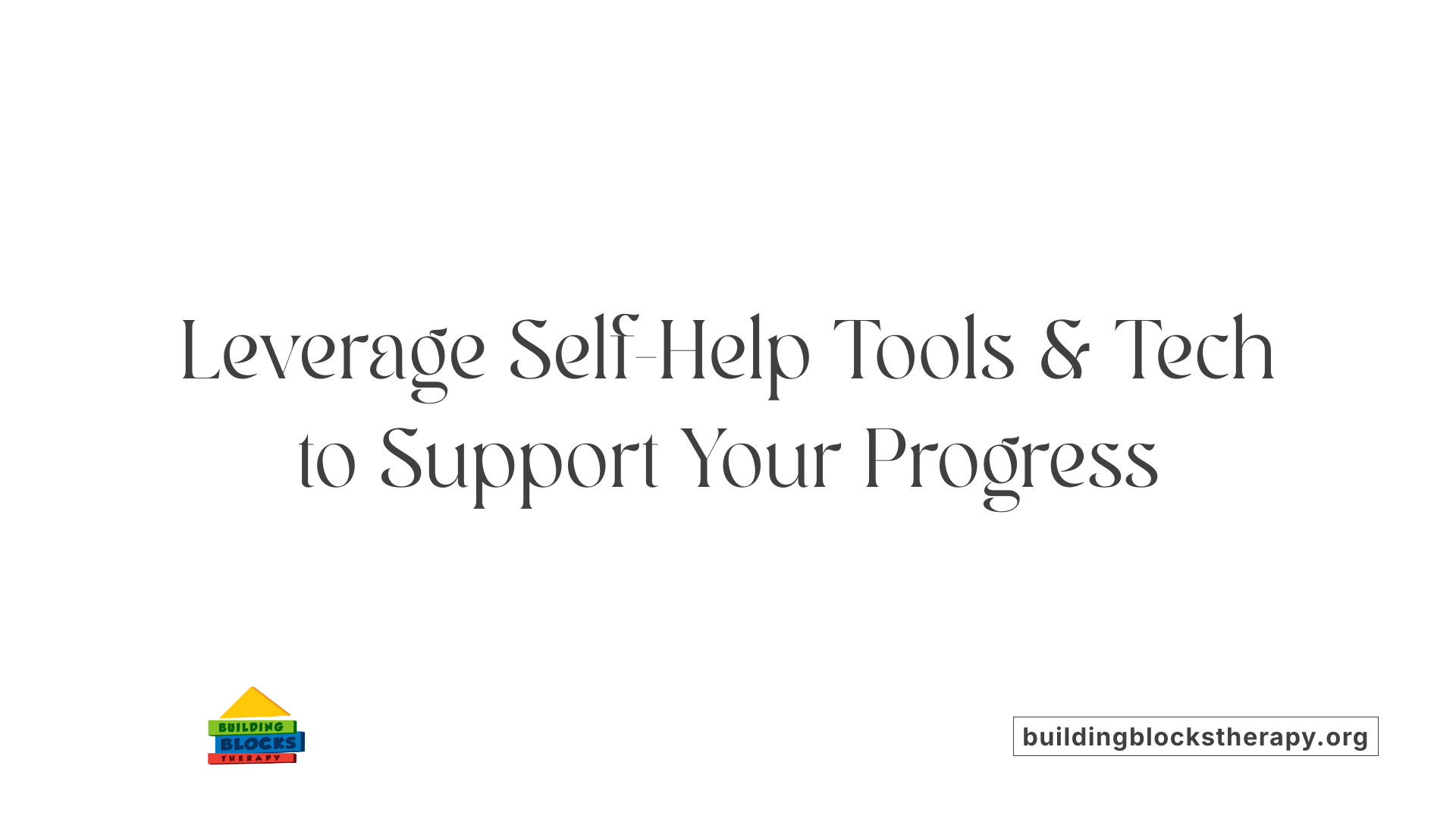 Incorporating self-help tools and digital resources can significantly support therapy exercises and promote mental health and speech development at home.
Incorporating self-help tools and digital resources can significantly support therapy exercises and promote mental health and speech development at home.
Apps and online courses tailored to specific needs offer convenient ways to reinforce therapy strategies. For example, speech therapy apps like Smarty Ears, Articulation Station, and Kokolingo provide engaging activities that motivate children to practice speech and language skills regularly. Online courses often include structured modules covering topics like emotional regulation, resilience-building, and cognitive-behavioral techniques.
Tracking tools are also essential to monitor progress and emotional states over time. Journaling platforms and mood-tracking apps allow individuals to record their feelings, thoughts, and behavioral patterns, helping therapists and clients identify trends and adjust interventions accordingly. Digital worksheets and goal-setting tools further assist in organizing therapy goals and tracking achievements.
Additionally, a range of online resources supports therapy outside of sessions. Websites offering interactive exercises, videos, and printable activities help reinforce concepts learned during therapy. These resources are particularly useful for exercises like gratitude journaling, cognitive restructuring, and behavioral activation.
Supportive approaches for children’s speech development at home include engaging children in daily meaningful interactions. Talking about routines, describing objects, singing songs, and asking questions stimulate expressive language. Using visual aids and gestures enriches communication.
Parents should act as models of clear, age-appropriate language. Reading aloud and involving children in storytelling, role-play, and play activities enrich their vocabulary and speech skills. Employing speech therapy apps during routine activities like mealtime or playtime can further promote progress.
Maintaining patience and providing encouragement are vital. Incorporating sign language as a transitional tool can support understanding until verbal skills develop fully. Celebrating achievements, no matter how small, boosts confidence and motivation.
By combining digital resources, tracking progress, and engaging actively in speech exercises at home, parents and individuals can accelerate development and achieve lasting improvements. Regular use of these tools complements professional therapy and fosters a supportive environment conducive to growth.
| Resource Type | Example Tools | Purpose | Additional Notes |
|---|---|---|---|
| Apps | Smarty Ears, Articulation Station, Forbrain | Speech practice, motivation | Use during daily routines |
| Online Courses | Behavioral health platforms, speech development programs | Learning and reinforcement | Structured modules available |
| Tracking Tools | Mood trackers, goal planners, journaling apps | Monitor progress, emotions | Helps therapy adjustment |
| Printable Resources | Worksheets, activity sheets | Practice exercises | Supports independent practice |
Setting Realistic Expectations with Therapy
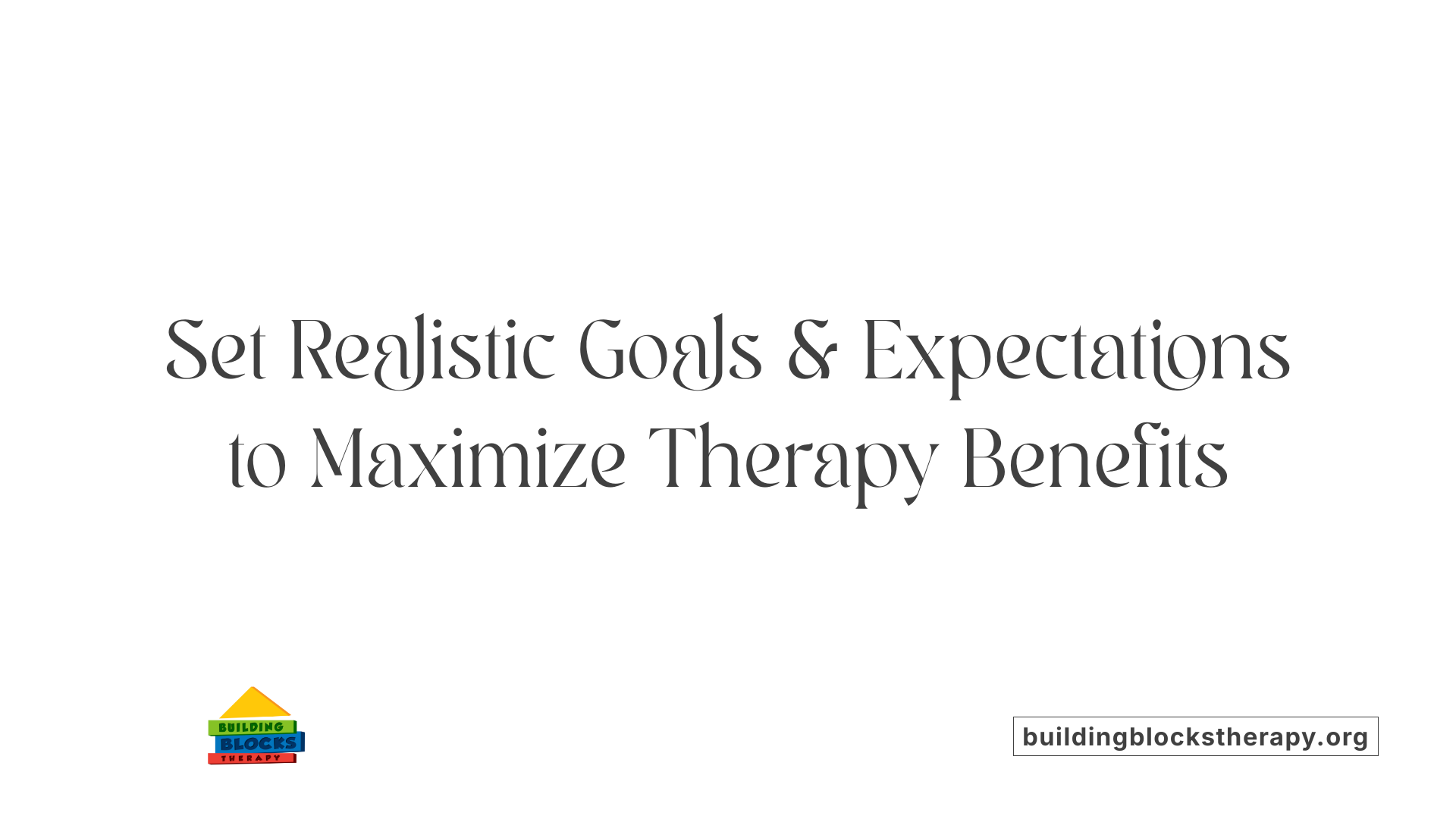 Understanding what therapy entails and how to maximize its benefits can significantly improve your mental health journey.
Understanding what therapy entails and how to maximize its benefits can significantly improve your mental health journey.
Therapy Duration and Goal-Setting The length of therapy varies depending on individual needs, ranging from a few weeks to multiple years. Setting clear, achievable goals—whether emotional, personal, or relational—guides progress and keeps you motivated. Collaborate with your therapist to define these objectives early on and revisit them regularly to track growth.
Initial Sessions and Ongoing Work In the beginning, therapy typically involves gathering background information and establishing a trusting environment. Your therapist will listen to your concerns, while you share your experiences and aspirations. Subsequent sessions focus on tackling specific issues, learning coping skills, and increasing resilience. Active participation, honesty, and homework completion play crucial roles.
Adaptability and Changing Therapists Therapies are tailored to fit your evolving needs. If you find that your current therapist isn't meeting your expectations or you don't feel comfortable, it’s advisable to consider switching. Finding a therapist whose approach aligns with your style and goals can enhance your progress.
What should I expect from therapy, and how can I self-help to better complement professional sessions?
In therapy, expect a personalized approach aimed at addressing your mental health concerns. You'll gain insights, develop coping strategies, and work on achieving your goals. To enhance these benefits, engage in self-help practices like reading relevant materials, practicing relaxation techniques, journaling your thoughts and feelings, staying physically active, and maintaining healthy routines. Techniques such as mindfulness, positive self-talk, and resilience exercises complement therapy sessions and promote continuous growth. When combined, professional support and self-initiated efforts lead to more sustainable improvements.
What should I expect from therapy, and how can I self-help to better complement professional sessions?
Therapy involves working closely with a licensed professional to navigate mental health challenges through customized interventions. Your initial sessions may focus on understanding your background and setting practical goals. Over time, you will process emotions and learn new skills. To maximize therapy’s effectiveness, be honest about your feelings, diligently complete homework assignments, and incorporate self-care strategies. Open communication with your therapist and regular adjustment of your goals ensures that therapy remains aligned with your needs.
By setting realistic expectations and actively participating both inside and outside therapy, you create a supportive environment for meaningful change. Combining professional guidance with self-help practices fosters resilience and long-lasting well-being.
Active Engagement in Therapy and Self-Care Practices

What strategies can help individuals actively engage in their mental health treatment and enhance outcomes at home?
Active participation in therapy is essential for maximizing benefits. This includes regularly practicing techniques learned during sessions, such as mindfulness exercises, journaling, or behavioral strategies. Completing therapy homework assignments helps reinforce new skills and track progress.
Creating a peaceful environment at home with designated spaces for reflection or relaxation supports emotional regulation. Using tools like calming apps or mood-tracking journals can also help monitor your mental health.
Open and honest communication with your therapist is vital. Sharing feelings, concerns, and feedback ensures therapy remains tailored to your needs. Additionally, involving trusted friends or family members provides emotional support and accountability.
Engaging in social activities and maintaining healthy routines foster resilience. Participating in community groups or hobbies promotes well-being and offers opportunities to practice social skills.
What strategies can help individuals actively engage in their mental health treatment and enhance outcomes at home?
Implementation of enjoyable activities, such as creative arts, gentle exercise, or meditation, makes self-care sustainable. Maintaining consistent routines, setting realistic goals, and reflecting on personal progress through journaling can boost motivation.
Seeking feedback from your therapist and involving supportive persons enhances adherence to treatment plans. Practicing self-care habits like adequate sleep, balanced nutrition, and mindfulness reduces stress.
Incorporating community involvement and social support helps foster a proactive mindset. These approaches collectively improve therapy effectiveness and support long-term mental wellness.
Supporting Children's Speech and Language Development
Creating an environment that nurtures speech and language skills is essential for young children. Incorporating routine-based activities and engaging practices helps them improve communication in natural settings.
Home environment for language development involves establishing supportive spaces where children feel comfortable to express themselves. Parents can serve as primary language models, consistently using clear and appropriate speech. Providing a rich linguistic environment—such as narrating daily routines, describing objects, and offering choices—encourages children to imitate sounds and words.
Routine-based practice integrates speech exercises into everyday activities. During mealtime, play, or reading time, parents can use gestures, ask questions, and encourage children to respond. Tools like speech therapy apps (Smarty Ears, Articulation Station, Kokolingo, and Forbrain) can add fun and motivation to practice sessions. Using visual aids such as pictures or mirrors, engaging in role-play, and modifying the environment to promote conversation supports progress.
Monitoring progress and early intervention are crucial to ensure effective development. Watch for signs like difficulty being understood or frustration during communication. Celebrating small successes motivates children and helps identify when professional help may be needed. Early assessment and intervention can significantly improve outcomes, especially if speech delays are detected early.
Supportive approaches for implementing therapy strategies at home include modeling language, narrating daily activities, and incorporating speech exercises into routines. Utilizing speech therapy apps and visual aids keeps children engaged. Patience, positive reinforcement, and involving the whole family create a supportive environment wherein children can thrive.
| Aspect | Strategies | Supporting Tools/Examples |
|---|---|---|
| Environment | Rich language exposure, modeling, visual aids | Mirrored practices, picture books, gesture cues |
| Routine | Narration, role-playing, reading, conversation prompts | Mealtime talk, story creation, speech apps |
| Monitoring | Observation, celebrating milestones, early assessment | Progress checklists, professional evaluations |
| Techniques | Repetition, imitation, reinforcement | Sign language, speech exercises, interactive apps |
Implementing these strategies consistently at home can accelerate speech development, making learning engaging and effective. Early and ongoing support paves the way for better communication skills, fostering confidence and social interaction.
Conclusion: The Power of Consistency and Patience
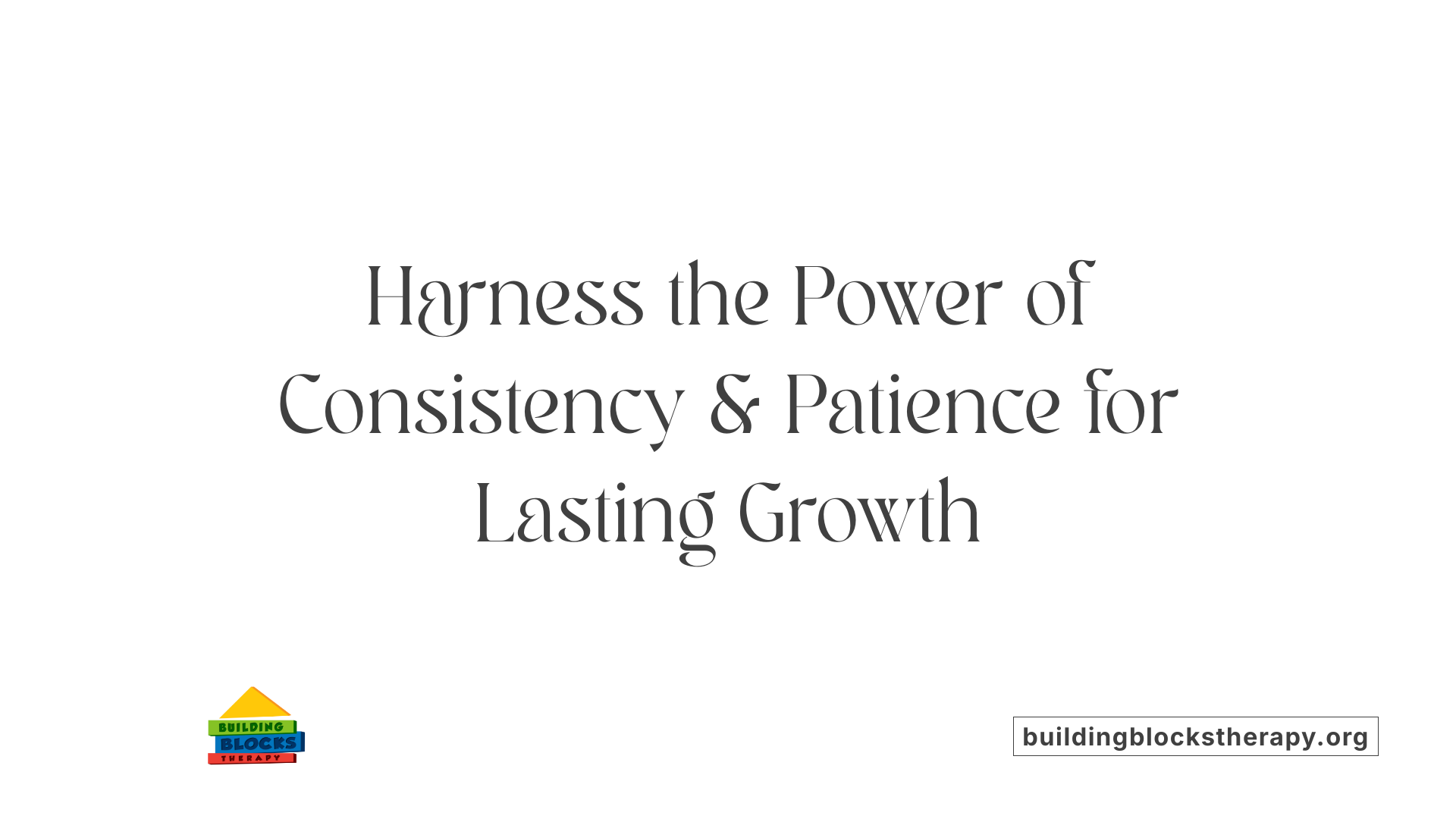
How do therapy exercises support mental health growth?
Therapy exercises are practical activities designed to help individuals develop better self-awareness, manage emotions effectively, and build resilience. These exercises can be integrated into therapy sessions or practiced at home. They serve as tools to deepen understanding of personal reactions and patterns, fostering long-lasting change.
What techniques are commonly used to boost mental health?
Several supportive techniques have proven effective, including mindfulness meditation, journaling, and role-playing. Mindfulness encourages staying present and observing thoughts non-judgmentally, which reduces anxiety. Journaling helps organize thoughts and track emotional states, promoting insight. Role-playing provides a safe space to practice new behaviors and improve social skills.
How do structured activities reinforce progress?
Incorporating structured activities like homework assignments or daily exercises ensures that positive changes extend beyond therapy sessions. These tasks reinforce new skills, keep motivation high, and help maintain progress over time. Regular practice increases confidence and helps integrate learned strategies into daily life.
What are specific exercises for managing anxiety?
For anxiety, exercises such as event visualization, where individuals imagine calming scenarios, or tackling anxious thoughts directly, can lessen worry. Managing panic attacks through breathing techniques, keeping anxiety records to identify triggers, creating visual diagrams for children, and labeling emotions are other effective tools.
What strategies help combat depression?
Depression-specific exercises often include recognizing patterns of rumination, addressing feelings of guilt or shame, and reflecting on personal stories of depression. Understanding the nature of depression and identifying unhelpful thinking styles like catastrophizing or black-and-white thinking are crucial for breaking negative cycles.
How can self-esteem be nurtured?
Improving self-esteem involves positive practices such as affirmations, regularly checking in on one’s confidence levels, writing self-love letters, and tracking successes. These activities reinforce a positive self-image and help build inner strength.
What exercises improve couple relationships?
Couples benefit from exercises like conflict resolution checklists, which clarify issues and solutions, and activities that focus on appreciating and valuing each other. Revisiting shared relationship histories and completing questionnaires about conflicts promote understanding and joint growth.
How do group therapy activities foster support?
Group exercises like empathic storytelling, compliment exchanges, boundary setting, and empathy drawing help members connect, understand diverse perspectives, and build mutual support. These activities create a safe community where shared experiences reduce feelings of isolation.
What role does writing play in therapeutic progress?
Writing exercises such as gratitude journaling, self-reflection prompts, and expressing concerns help individuals process emotions, reinforce positive habits, and manage stress. These practices foster mindfulness and emotional clarity.
How does Positive CBT differ from traditional approaches?
Positive CBT emphasizes developing helpful thoughts and behaviors that promote flourishing. Supported by scientific research, it focuses on solutions and strengths, helping clients build resilience and maintain mental well-being over time.
How to monitor progress in therapy?
Tracking progress can involve using standardized tools like PHQ-9 for depression or GAD-7 for anxiety, documenting personal goals, observing behavioral patterns, and journaling emotional experiences. Regular assessment helps tailor therapy to evolving needs.
What questions should individuals ask their therapist?
Encouraging yourself to ask tough questions and reflect on difficult topics—even if uncomfortable—can deepen understanding. A good therapist supports exploring traumatic memories and challenges, fostering healing.
Why are clear therapy goals important?
Setting clear, personalized goals—emotional, personal, or relational—guides the therapy process. Goals help clients measure progress and stay focused on their desired outcomes.
How can individuals maximize therapy benefits at home?
Applying therapeutic tools consistently, being honest with therapists, and reflecting on feelings or questions before sessions enhance progress. Following through on homework assignments and practicing skills daily reinforces growth.
What about telehealth therapy?
Remote sessions are comparable to in-person meetings. Providing a private, distraction-free environment improves focus and helps individuals engage fully with their therapist.
How do therapy exercises aid in managing specific conditions?
Exercises tailored to conditions like ADHD, BPD, or OCD focus on reflection and outside processing. They promote accountability and support addressing core issues for better management.
Can people expect growth even when facing setbacks?
Absolutely. Consistent effort and patience, along with openness to feedback—both positive and negative—foster ongoing growth. Recognizing setbacks as part of the process encourages perseverance.
Summary Table of Therapy Exercises and Strategies
| Approach | Focus | Example Activities | Benefits |
|---|---|---|---|
| Anxiety Management | Emotional regulation | Event visualization, emotion labeling | Reduce worry, build coping skills |
| Depression Support | Thought restructuring | Recognizing rumination, understanding stories | Break negative cycles |
| Self-Esteem Building | Confidence | Affirmations, success tracking | Foster a positive self-image |
| Couples Therapy | Relationship growth | Conflicts checklists, appreciation activities | Improve communication |
| Group Therapy | Support network | Empathy drawing, boundary exercises | Enhance social skills |
| Writing Exercises | Emotional clarity | Gratitude journaling, self-reflection | Promote mindfulness |
| Positive CBT | Strengths focus | Developing helpful thoughts | Build resilience |
By integrating these practices regularly and adapting them to individual needs, therapy can lead to meaningful and lasting improvements in mental health and personal development.
Empowering Your Therapy Journey at Home
Implementing therapy strategies at home can significantly enhance personal growth, emotional resilience, and children's developmental milestones. Patience, consistency, and active engagement are key to transforming therapeutic insights into lasting change. By adopting varied techniques, leveraging technology, and fostering a supportive environment, you can maximize the success of your therapy journey and attain meaningful progress. Remember, the combination of professional guidance and your proactive efforts creates a powerful foundation for ongoing wellness.
References
- 17+ Powerful Therapeutic Activities & Therapy Exercises
- How To Get the Most Out of Therapy
- 16 Speech Therapy at Home Strategies: Effective Tips
- How to get the most out of therapy: Strategies for effective ...
- 35+ Powerful CBT Exercises & Techniques for Therapists
- Online self-help CBT techniques - Every Mind Matters
- 35+ Powerful CBT Exercises & Techniques for Therapists
- Self-guided CBT techniques to improve your mental health

